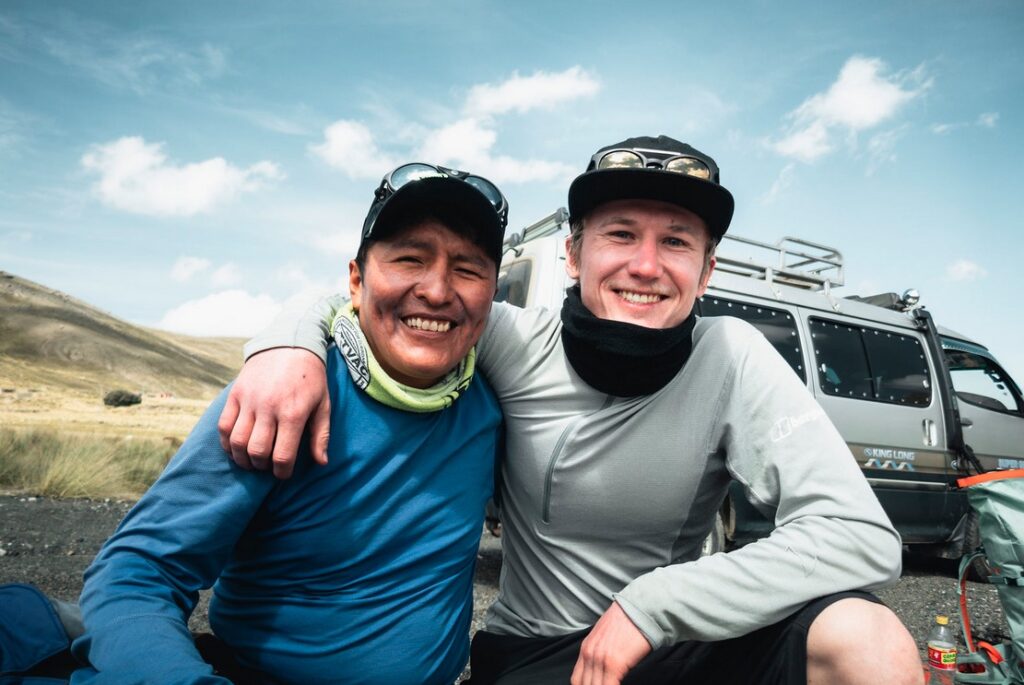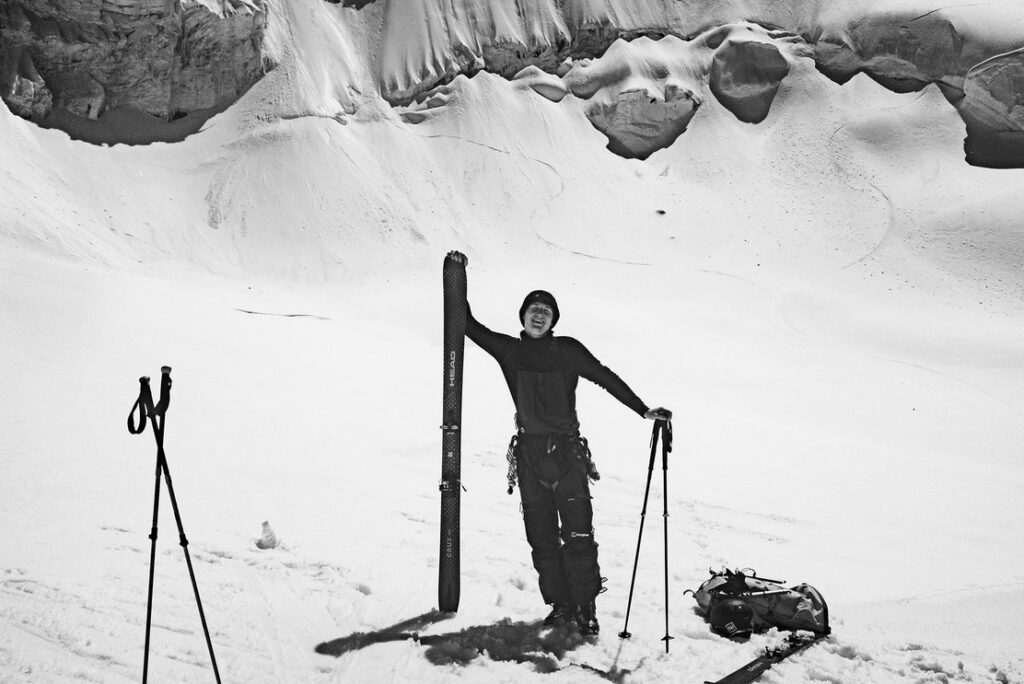
Vali Werner-Tutschku: „At descents from 6,000 meters, every mistake is punished“
“Sariri” is the documentation of a grand adventure in the Andes. Vali Werner-Tutschku and his friends from Mountaintribe not only skied peaks at extreme altitudes but also heavily involved the local population in their explorations, as he tells us in this interview.
How did the idea for “Sariri” come about, and who was the driving force behind it?
Vali Werner-Tutschku: The year before, I had traveled through the regions of Huaraz in Peru and La Paz in Bolivia. There, I saw the incredible potential of the mountains, where few or no people had ever skied. And so, the idea came to me: “Hey, I want to go back there, but this time with skis. And we’ll make something cool out of it.” The idea was to ski down some steep walls I had photographed.
Said and done: wrote a concept, pitched it, secured funding—and we were off. Although it was relatively late when we finally gave ourselves the green light. So, I was the driving force behind the project. The others trusted me a lot because they had never been to these countries and had no personal impressions of it.
What preparations did you have to make for the altitude and conditions?
Since I had already been on a few mountains over 6,000 meters the previous year, I knew that we needed to put a strong focus on proper acclimatization. I specifically studied up on it as well. Otherwise, what we wanted to do would not have been possible.
How did the acclimatization process go?
We arrived at La Paz airport at 4,100 meters and had an excellent base there for acclimatizing without having to go into the mountains. After five or six days in the city, we started doing acclimatization tours. These were day hikes without skis up to 5,000 to 5,500 meters—one day a hike, the next day a rest, and we did this three times. We noticed that with each time, we improved and were better acclimatized. So, we decided to climb our first 6,000-meter peak with skis.
Acclimatization was extremely important to me—there was some disagreement within the team about whether we really needed that third hike. But I insisted because we had enough time, and it did us a favor in the long run.
TERMINE UND TICKETS FÜR DAS FFF 2024
What were the most dangerous situations during the shoot?
In general, it wasn’t easy to get four people plus a guide from point A to point B. Sometimes at night, across huge glacier fields, ice falls, and seracs (towers of glacial ice), often without seeing much. But those weren’t the most dangerous situations. The trickiest part was climbing on Tocllaraju (6,034 meters, Peru), where we had to rappel down and then climb past seracs, roped up, towards the summit. It was all calculated risk, but the overall situation was quite tense. Because in that location, mountain rescue won’t come for you. If you’re lucky, a few colleagues might come by three days later to rescue you.
And during the descents?
In terms of downhill skiing, the descent from Chachacomani was definitely the most dangerous. It was the first ski descent of this 6,074-meter mountain, with slopes as steep as 60 degrees. It wasn’t a pleasant ride down, and the snow conditions weren’t great either. At that altitude, and on such a descent, every single mistake is immediately punished. When you see the film, you’ll know what I mean.
How did you establish contact with the locals?
In Peru, it was relatively easy because the grandfather of Martin Kogler had been in the region 20 years ago. His then-young porter, Christian, is now a mountain guide and was our guide. Christian had even been in Fieberbrunn, Austria, in the early 2000s, where he trained to become a ski instructor, and then he became a mountain guide in Bolivia.
Christian recommended Sergio to us, who is one of only five guides in Bolivia who can ski. He also heads the “mountain rescue team,” which consists of five or six other guides. You can’t compare it to the mountain rescue organizations in Austria or other Alpine countries, of course.

What did you personally take away from this mega-project?
It was unique and much bigger, much more demanding, than anything we’ve done in recent years. But without the years of personal experience in the mountains, this project wouldn’t have been possible. We aimed for top-level objectives and ultimately achieved them. I’m incredibly happy because I really enjoyed it—skiing steep 6,000-meter walls, in a different culture, and among different people. And I genuinely like the people and the culture there.
Having all these memories with my friends captured on film is, of course, very special. We’ll still be able to watch it in 30 years. And showing the film to the world this fall is simply the reward for all the work we put into it. And that was huge!
Ähnliche Artikel
22.10.2024
Griffin Glendinning: “Svea Irving had never been filmed in the backcountry before”
"Stasis" is a mystical, melancholic portrait of Svea Irving, who competes for the US national team in the halfpipe. The film showcases her experiences in the wilderness and in nature in a cool and abstract way. In this interview, director... more15.12.2021
Worldwide Show: Winning made easy
Our Worldwide Show on 16 December not only offers an exciting, entertaining film programme. The exclusive prizes we are giving away online are also really something special. https://vimeo.com/640954940 Everyone can win When... more03.12.2021
Get ready for the FFF Worldwide Show on 16 December 2021
We will do it again! After our first live stream event in December 2020 was such a great success, we are going global again with the FFF Worldwide Show. The start is on December 16, 2021 at 7 p.m. (CET). The tickets are available in three... more